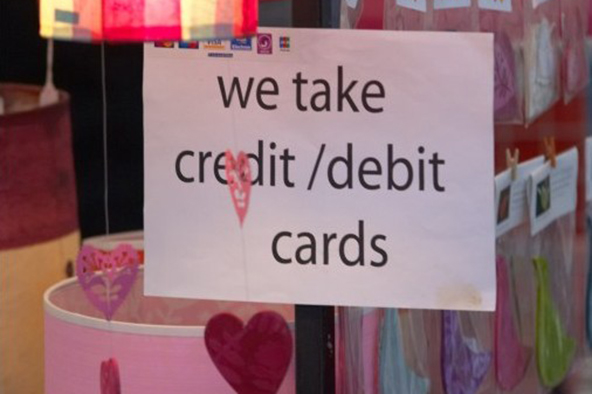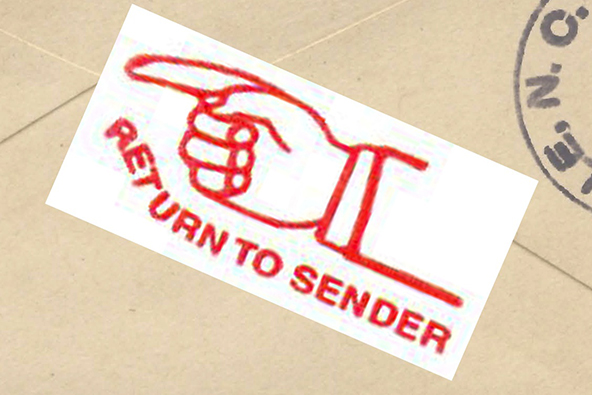The Double Standard of Debit Interchange Fees

Credit unions and small banks have suffered no damage from the debit interchange fee-slashing Durbin Amendment, a new Federal Trade Commission (FTC) report concludes. Now, some of you may ask why we would need a whole report issued by a governmental agency to help us reach such a judgment and that would be a perfectly reasonable question. After all, the Durbin Amendment allowed smaller financial institutions to keep charging merchants debit transaction fees at pre-reform rates, which are higher by about 45 percent than the ones which took effect in October of 2011.
Yet, as the report notes, credit unions and small banks were nevertheless concerned that their interchange revenues would fall all the same, although perhaps not by as much as the bigger banks’ revenues. The rationale given at the time the Durbin Amendment was still being hammered out was that merchants would begin to discriminate against the small-bank-issued cards, because they are more expensive to accept. Well, the FTC is now telling us that the smaller banks have done just fine. Let’s take a look.
Double Standard
Firstly, let’s remind ourselves what the Durbin Amendment did. The FTC:
On July 20, 2011, the Federal Reserve Board issued its final rule on Debit Card Interchange Fees and Routing (Regulation II), which, among other things, provides that an issuer subject to the interchange fee standard (a non-exempt issuer) may not receive an interchange fee that exceeds 21 cents plus 0.05 percent multiplied by the value of the transaction, plus one-cent for certified fraud-prevention programs.
And here is who was exempted from the Amendment’s effects:
Generally, the interchange fee restriction does not apply to certain government-administered debit cards, certain prepaid cards, or debit cards from issuers with consolidated assets of less than $10 billion (exempt issuers).
There are more than 14,000 exempted issuers, by the FTC’s count, which keep collecting debit interchange fees at pre-reform rates. To apply this double standard in practice, the debit card networks had to develop a two-tier fee structure for exempt and non-exempt issuers, the FTC reminds us. You can take a look at Visa’s current interchange table to understand how that works. So how did these changes affect interchange revenues?
Higher Fees Do Equal Higher Revenues
The data have confirmed common sense, the FTC tells us:
According to data collected by the Federal Reserve Board and released in May 2012,19 interchange fees paid to exempt issuers are higher than those paid to non-exempt issuers. A recent report by the General Accountability Office also concluded that “community banks and credit unions have not, on average, experienced a significant decline in their debit interchange fees as a result of the Federal Reserve’s implementation of section 1075 of the Dodd-Frank Act.”20 This is consistent with early reports that the payment card networks had adopted a two-tier fee structure for exempt and non-exempt issuers.
Within each category of exempt and non-exempt issuers, there is variation in the interchange fees set by competing payment card networks. For instance, in the period October 1 through December 31, 2011, fees for non-exempt issuers ranged from 15 cents per transaction to the maximum of 24 cents, and fees for exempt issuers ranged from 15 cents to 54 cents per transaction.
We are also told that competition from lower cost processors has led the heavyweights to begin “offering a range of interchange rates”.
Finally, the FTC, acting on a directive from the Senate Appropriations Committee, has found no evidence that
payment card network companies have taken steps to diminish the ability of small banks and credit unions to successfully compete with large financial institutions in the debit card issuance market…
The Takeaway
There you have it. Everywhere the FTC has looked, it has seen that the financial institutions exempted from the Durbin Amendment have not suffered any adverse effects. That being the case, the much higher debit interchange revenues collected by credit unions and smaller banks should go quite a way toward the proverbial leveling of the playing field they have been asking for ever since I can remember.
As a direct result of the reform, the smaller players can much more easily afford to keep their checking accounts free of charge, even as these have all but disappeared from the big banks’ offerings. The latter have been feverishly looking for alternative sources of revenue to replace the shrinking interchange fee income, alienating customers, who end up footing the bill, in the process. Some of these consumers have already defected to credit unions and others say they are planning to do so. However, whether the credit unions will be able to keep these new customers in the long run remains to be seen.
Image credit: Wikimedia Commons.


